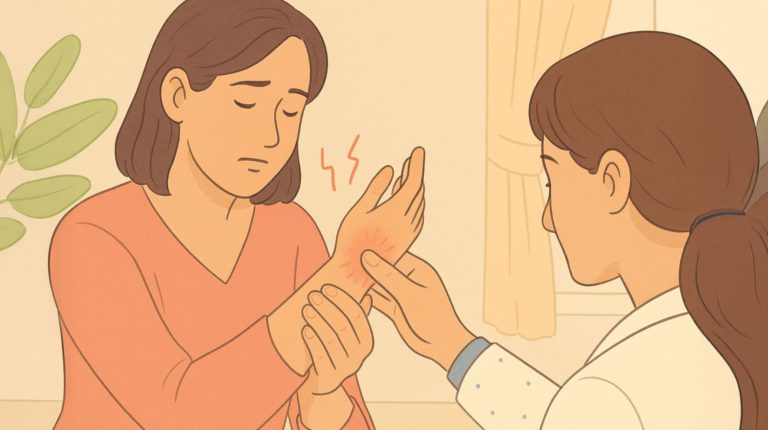Sudden Infant Death Syndrome or SIDS, is a tragic and deeply concerning event that leaves parents confused, shocked, grief-struck, and looking for answers. SIDS is one of the leading causes of infant death within the first year of life. Unfortunately, 90% of infant deaths from SIDS occur during the first six months and are most common between two and four months of age.
Fear for your baby and worry over SIDS can be overwhelming which is why understanding the risk factors is so crucial. Luckily, the American Academy of Pediatrics (AAP) and the Centers for Disease Control (CDC) have several recommendations that can be implemented to help reduce the risk of SIDS and create a safe sleep environment for babies.
So, if you’re looking to take precautions and protect your little one, read on for expert-backed insights.
What is the Sudden Infant Death Syndrome?
Every year in the United States, over 3,000 babies die from SIDS and other causes such as suffocation or strangulation. These deaths are sudden and unexplained and often occur among seemingly healthy babies while they are asleep which is why they are frequently referred to as “sleep-related deaths.”
If a baby dies unexpectedly, a thorough investigation is completed wherein an autopsy, review of the infant’s medical history, and examination of the sleep space/home are conducted. If there is no identifiable cause of death, it is deemed as SIDS.
90% of infant deaths from SIDS occur among babies younger than six months of age and usually between the hours of midnight and 6 am while they sleep. While there is no exact cause or known reason why these deaths happen, however, several risk factors and preventative measures have been identified which can help you reduce the risk to your baby.
Sudden Infant Death Syndrome causes or risk factors
In the 1990s, the AAP recommended that babies be placed on their backs to sleep, which caused a steep decline in sleep-related infant mortality. However, the numbers have plateaued since then, and SIDS remains the leading cause of infant death.
The risk factors are as follows:
- Illness
- Babies who have been unwell or had a high fever are at a higher risk of SIDS.
- Babies who have been unwell or had a high fever are at a higher risk of SIDS.
- Sleep environment
- Babies who sleep in locations other than their crib or bassinet, such as their parent’s or sibling’s beds, on the sofa, or with a pet (in their cot or an armchair), are at a very high risk of SIDS, suffocation, and strangulation.
- Bed-sharing with parents also poses a high risk of SIDS especially if the parent uses sleep medication, drugs, or alcohol which can affect their ability to respond.
- Temperature
- Babies can overheat when they sleep on their stomachs and increased body temperature poses a higher risk of SIDS.
- A higher room temperature also contributes to the risk of SIDS.
- Over-bundling or dressing babies in too many layers can lead to overheating.
- Unsafe sleep environment
- Babies who are placed on soft surfaces or in a crib with blankets, Soft toys, and bumpers, are at a higher risk of SIDS as well as suffocation, entrapment, and strangulation.
- Babies who are placed on soft surfaces or in a crib with blankets, Soft toys, and bumpers, are at a higher risk of SIDS as well as suffocation, entrapment, and strangulation.
- Preterm birth and low birth weight
- Babies born before 37 weeks are at a higher risk of SIDS.
- Babies with a lower birth weight (less than 5 pounds) are at higher risk of SIDS.
- Maternal risk factors
- Smoking, drug, and alcohol use during pregnancy Can greatly increase the risk for SIDS.
- Inadequate prenatal care can also lead to an increased risk of SIDS.
- Sleeping positions
- Babies that are placed on their sides or stomachs are at a higher risk of SIDS.
- Babies who typically sleep on their backs and are used to this position but are placed on their side or stomach are at a very high risk of SIDS.
How to minimize the risk of SIDS
To reduce the risk of SIDS, the AAP recommends:
- Placing babies on their backs to sleep in their crib.
- Parents should avoid bed-sharing and allow babies to sleep on their own.
- Baby’s crib or bassinet should have a flat, firm mattress with a fitted, not loose sheet.
- Do not allow the baby to fall asleep on a couch, in a car seat (except when traveling), or swing.
- Keep the crib empty of blankets, bumpers, soft toys, and pillows.
- Avoid recreational drugs, alcohol, and smoking.
- Use a pacifier.
Conclusion
To create a safe sleep environment for your little one, it is important to understand the risk factors of Sudden Infant Death Syndrome. SIDS cannot always be prevented and it is never your fault if it does happen.
However, taking all the necessary precautions such as using a pacifier, a firm mattress, and placing your baby on their back, can dramatically reduce the risk and give your baby the best chance at a healthy, restful start to life.




